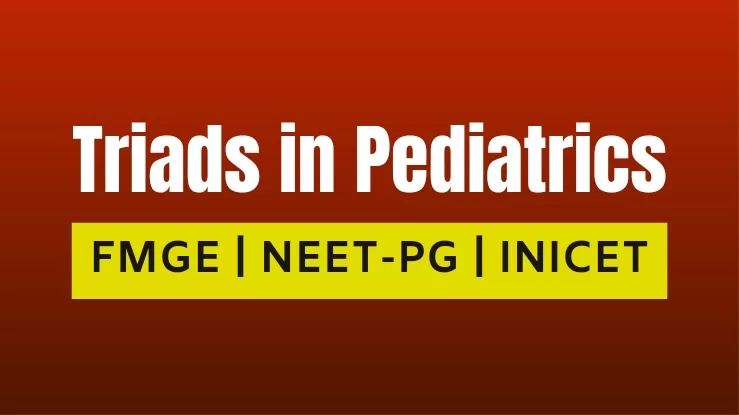In the field of pediatrics, triads are sets of three clinical features that are often associated with specific conditions or diseases. These triads can aid in the diagnosis and recognition of certain pediatric conditions. Here are a few examples of well-known triads in pediatrics:
1. Beck’s Triad
- Muffled heart sounds
- Distended neck veins
- Hypotension
Associated with cardiac tamponade, a medical emergency caused by the accumulation of fluid in the pericardial sac around the heart.
2. Kawasaki Disease Triad:
- Fever persisting for more than 5 days
- Conjunctivitis (red eyes)
- Changes in the mucous membranes, such as red, cracked lips or a “strawberry tongue”
Kawasaki disease is an inflammatory condition that primarily affects young children and can lead to coronary artery abnormalities if not treated promptly.
3. Menkes Disease Triad:
- Sparse, kinky hair
- Growth retardation
- Neurological abnormalities, such as seizures or developmental delay
Menkes disease is a rare genetic disorder affecting copper metabolism, resulting in copper deficiency and leading to various systemic manifestations.
- Wernicke-Korsakoff Syndrome Triad:
- Confusion and mental changes
- Ataxia (loss of coordination)
- Ocular abnormalities, including nystagmus (involuntary eye movements)
Wernicke-Korsakoff syndrome is caused by thiamine (vitamin B1) deficiency, often seen in individuals with chronic alcoholism or malnutrition.
- Congenital Rubella Syndrome Triad:
- Sensorineural deafness
- Ocular abnormalities, such as cataracts or retinopathy
- Cardiac defects, such as patent ductus arteriosus (PDA)
Congenital rubella syndrome occurs when a fetus is infected with the rubella virus during pregnancy.
It’s important to note that while these triads can be helpful in clinical practice, not all patients with a specific condition will exhibit all three features. Diagnosis should be based on a comprehensive evaluation of clinical signs, symptoms, and appropriate diagnostic tests.

